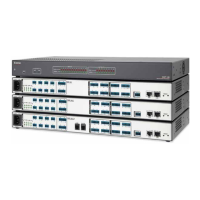Unmute the mix-point from the pink noise source to the output connected to the room
amplifier being calibrated. With the basic gain structure previously set up, loudness can be
calibrated using an SPL meter or by ear. (Loudness can also be set using an SPL meter,
then fine-tuned by ear.)
To calibrate loudness, use a sound pressure level meter set to “C” weighting:
1. Set the Loudness processor to Bypass (Bypass button red).
2. Place the meter in an average (but somewhat prominent) listening location.
3. Generate pink noise, or start the program material playback.
4. Measure the SPL in the room.
5. In the loudness dialog, adjust the slider until the value in the SPL readout box
matches the reading on the SPL meter.
NOTE: Theoretically, calibration can be performed with the output channel
volume and post-mixer gain level set to any comfortable listening level. But a
relatively loud volume (well above the ambient noise in the room) that can be
easily measured is preferred.
Loudness is now calibrated. Disengage Bypass to hear the compensation.
Alternate method to calibrate loudness:
1. Set up the procedure using steps 1 through 3 of the previous procedure.
2. Set the compensation adjustment slider to its default center position.
3. Set the output channel volume fader to 0dB (100% volume).
4. Adjust the amplifier until the SPL meter reads 90dB.
Loudness is now calibrated. This method works if 90dB is an acceptable amplifier volume
limit for the room.
Setting Loudness “By Ear”
When setting loudness by ear, it is essential the system gain structure be set up first. Sit in
an average (but somewhat prominent) listening location.
1. Set the loudness processor to Bypass.
2. Set the output volume fader in the DSPConfigurator to a relatively quiet listening level.
Filter compensation from the loudness processor is most prominent at low listening
levels. Use familiar program material set to the levels described earlier.
3. Set the Calibrate slider to 0, the center point. Disengage the loudness Bypass.
The result is a moderate enhancement to the program material, with more
accentuated bass frequencies (below 500Hz), and more brightness in the high
frequencies that carry harmonic content (above 7kHz). Engage and disengage
the Bypass switch in order to “A/B” the difference between loudness off and on,
respectively.
4. To experiment with less loudness compensation, move the loudness compensation
slider to the left (less). For more loudness compensation, move the slider to the right
(more).
5. Any adjustment made to the loudness compensation slider will carry through to all
listening levels. Set the output volume fader in the DSP Configurator to a relatively
loud listening level.
6. Engage and disengage the Bypass switch in order to “A/B” the difference between
loudness off and on. At a loud listening level, the difference should be minimal or
barely perceivable.
DMP128 • Software Control 60

